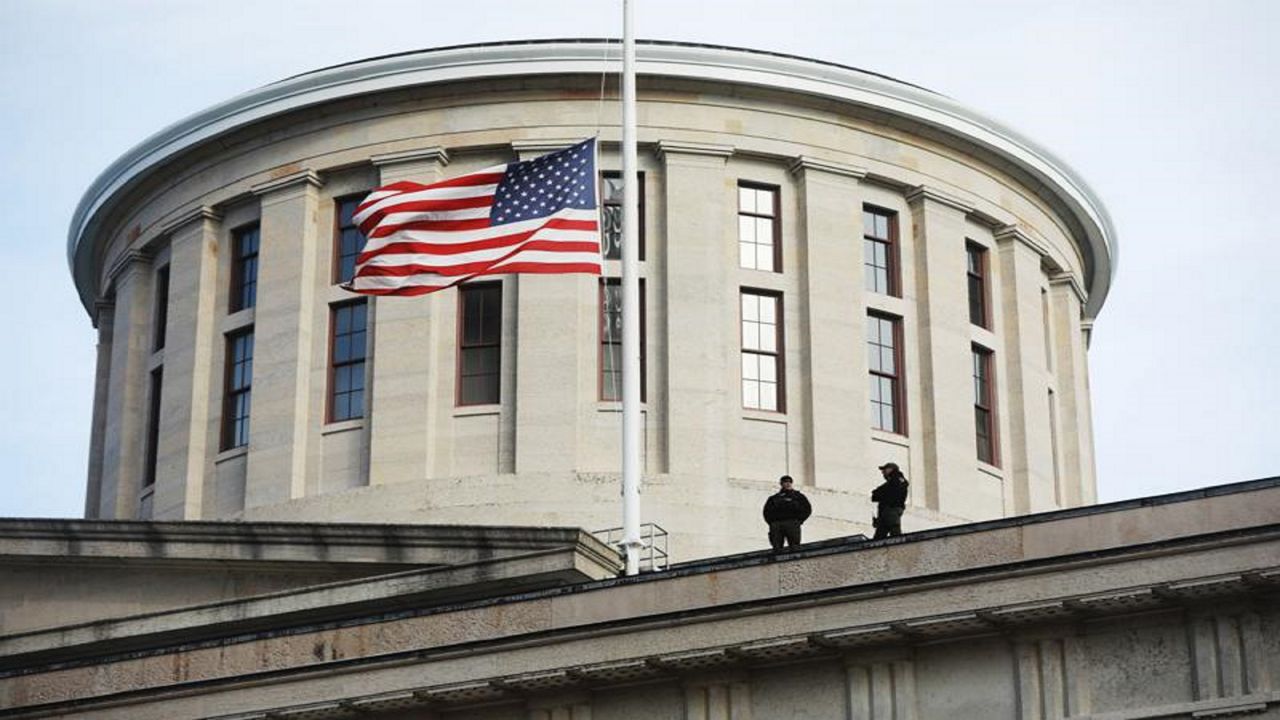COLUMBUS, Ohio — Now that Cincinnati Mayor John Cranley has entered Ohio’s 2022 gubernatorial race, his entry ensures that both the Democratic and Republican primaries will be competitive next May.
Cranley will oppose Dayton Mayor Nan Whaley in the Democratic primary. Meanwhile, Gov. Mike DeWine will face former Rep. Jim Renacci and Columbus-area farmer Joe Blystone for the GOP nomination
Given that it’s only August, others could potentially enter the race in the coming months.
DeWine is in a rare spot for an incumbent governor by having to run a primary campaign. Not since Gov. Jim Rhodes in 1978 has an incumbent Ohio governor been challenged in a primary.
Renacci spent four terms in the U.S. House before opting to run for U.S. Senate in 2018. Renacci has become a voice of opposition to DeWine and the state’s protocols to limit the spread of COVID-19.
“DeWine represented fear over freedom,” Renacci said in a video posted in June when he announced his candidacy. “He cost Ohio big time. So many jobs are gone. Local businesses perished, shutdowns, schools closed.”
"DeWine defied Trump and was praised by Biden,” he added.
DeWine was among the first governors in the U.S. to take sizable measures in fighting the COVID-19 pandemic. Ohio was among the first states to prohibit mass gatherings. The state was also one of the first to close non-essential businesses during the onset of the pandemic.
The governor’s response to the coronavirus ultimately led to DeWine having a higher approval rating among Democrats than Republicans, according to a June 2020 Quinnipiac University poll. DeWine had an 81% approval rating among Democrats and a 76% approval rating among Republicans. DeWine had an 88% approval rating among Democrats for his handling of the pandemic versus a 74% approval rating among Republicans for his response to COVID-19.
DeWine also has a significant fundraising advantage over his opposition. According to the Ohio Secretary of State, DeWine had $6.5 million cash on hand after receiving more than $3 million in contributions in the first half of 2021. Renacci had $1 million on hand while Blystone had $134,000 on hand, according to Ohio Secretary of State reporting.
So far, the Democratic primary pits two southwest Ohio mayors against each other. Cranley has been mayor of Cincinnati since 2013. He will go against Whaley who has led Dayton since 2014.
Before Cranley entered the race on Tuesday, Whaley announced her candidacy on April 19.
Despite Whaley having nearly four months of additional time campaigning, her campaign coffers are comparable to Cranley’s. As of July, Whaley had received $1.6 million in contributions in the first half of 2021 and had $1.4 million cash on hand, according to a filing with the Ohio Secretary of State's office. Cranley had $1.3 million on hand after receiving just over $1 million in contributions, according to his July 2021 report to the Secretary of State's office.
Whaley has garnered a national platform as she leads the United States Conference of Mayors. During her tenure, Whaley had to respond to both a mass shooting and a devastating tornado within months of each other.
Cranley said on Tuesday he’s hoping to “cut poverty, create good-paying jobs, and write a new story for Ohio” if elected.
One candidate from each party’s primary will advance to the November 2022 general election. Ohio has what is known as a partially open primary, which means any voter can participate in the party primary of their choosing. The caveat is that a voter will then be registered as a member of that party.
The November 2022 gubernatorial election will be on the same ballot as the congressional midterms. Sen. Rob Portman’s seat will be up for grabs in the U.S. Senate as the two major political parties look to break a 50-50 tie.
Republican candidates have won seven of the last eight Ohio gubernatorial elections.



